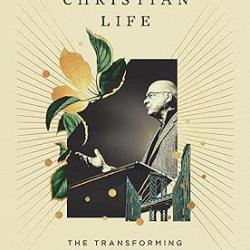This post is part of a series walking through the second volume of Abraham Kuyper’s Common Grace
So far we’ve seen two broad spheres–the realm of common grace and the realm of particular grace. But are they “entirely separate or interpenetrating”? (727) Each sphere has a different purpose and goal, but they come together and have a unity of purpose and goal at the point of God’s self-glorification:
“God has in view his self-glorification [in each sphere]–albeit in very different ways. God seeks his self-glorification with common grace a the original Artist and Master Builder of the universe, whereas with particular grace God glorifies himself through the realization of the kingdom of heaven.” (728)
Either God leaves these separate, or He lets them mingle. We know of course that they mingle, but what if they didn’t? Infants who die regenerate meet the criteria of this question, and maybe those who convert on their deathbeds. And here Kuyper notes that the Bible is silent on whether infants are regenerate or not, but because it’s silent “we should refrain from any definite pronouncement”, even if such a pronouncement “would be a great relief since it appeals to our human sensibilities” (729)
And yet, if all were saved like this, there would be no church in this world. There would consequently be no confession, no influence on the world, and nothing ultimately but “the life of the world.” (730) Yet many of us do go on in the world, and we “confessors” form the church. So particular grace and common grace come together in:
- the individual
- families
- society
- the nation
So we should investigate these points where common grace and particular grace meet, particularly relative to church/state relations. Some have wanted to keep the two spheres separate, but they are a minority The Anabaptists try this too–they wish to separate from the world but don’t realize that the world runs through their very homes and selves. Monks have done the same historically. This both ignores reality and the nature of sin, which is found in our impulses as well as in our actions. Regeneration has made our selves new, but in being made new not all indwelling sin has yet been removed. Change takes time, and doesn’t hit the body all at once. This means that our point of contact with the world (the body) remains sinful. Particular grace and common grace are therefore bound together intentionally by God.
We should remember as well that common grace and particular grace have the same root in our Maker and Redeemer. This means that in the next chapter we will turn our attention to the person of Christ.
Dr. Coyle Neal is co-host of the City of Man Podcast an Amazon Associate (which is linked in this blog), and an Associate Professor of Political Science at Southwest Baptist University in Bolivar, MO












